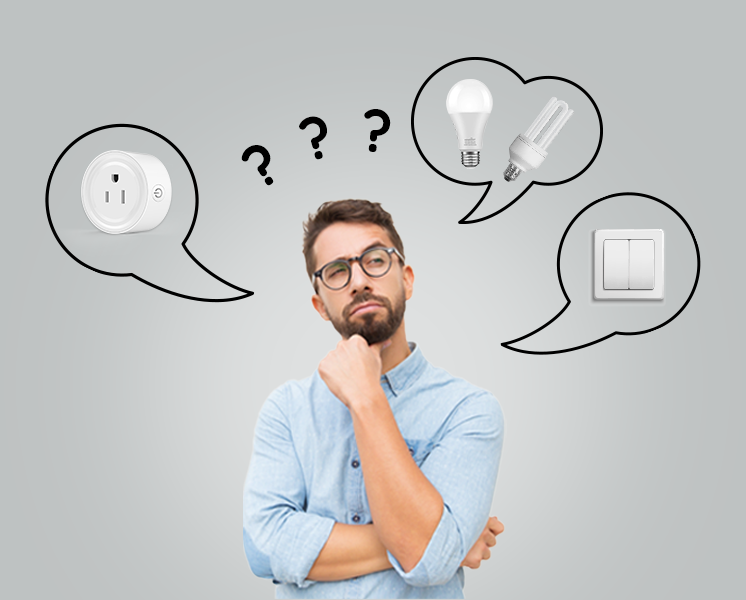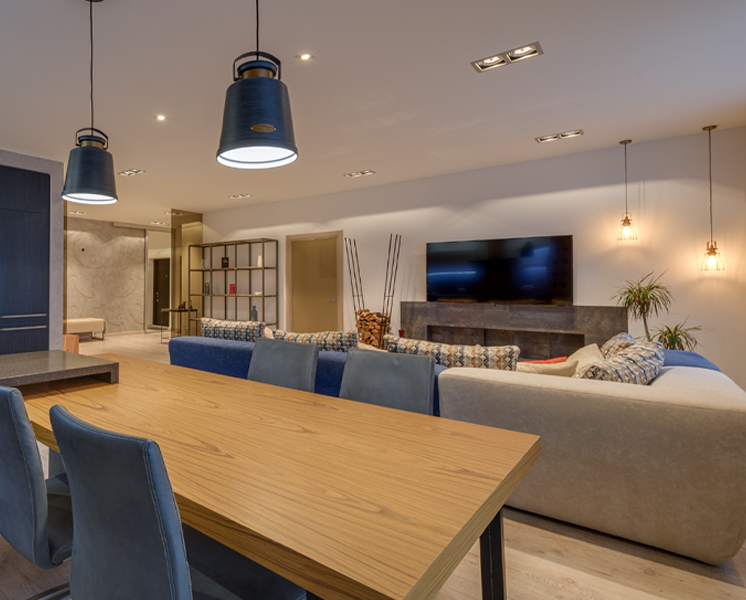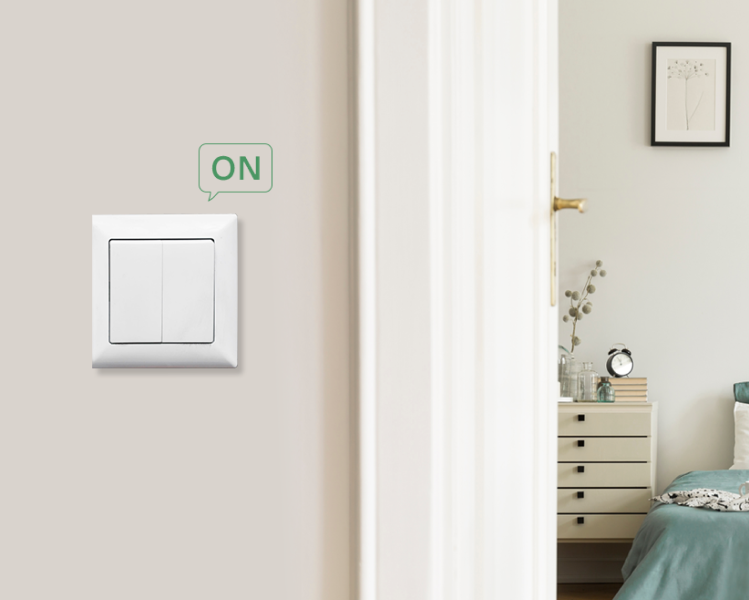One of the simplest ways to join the smart home revolution is with smart lights that you can automate and manage using voice commands, a smartphone, or other smart devices. You'll have more alternatives than ever when shopping if you want to replace your old lights with a smart light bulb or smart switch. Additionally, many affordable solutions are available due to the increase in competition.
How reasonable? With dirt-cheap white light smart bulbs that cost less than $10, color-changing bulbs that cost less than $15 each, solar-powered outdoor bright lights that cost as little as $35 each, as well as dimmable smart light switches and cool new lighting accessories that cost less than $50 each, you can build an entire smart lighting system.
But before we dig deeper into our top smart light bulb lineup, let us look at the foundations.
- What Is A Smart Light Bulb?
- Are Smart Bulbs Worth It? - Absolutely!
- Best WiFi Smart Light Bulbs In 2022
- FAQs of WiFi Smart Light Bulbs
What Is A Smart Light Bulb?
An internet-connected LED light bulb that can be modified, scheduled, and remotely controlled is known as a smart bulb. Among the items in the expanding area of home automation and Internet of Things (IoT) products, smart lights are among the most quickly successful ones.
Smart bulbs can be controlled using a mobile app or a home/building automation hub with WiFi, Bluetooth, ZigBee, or a custom home automation system connection. Individual lights can be programmed to change output in a specific way. Vendors can employ edge computing and outfit smart bulbs with extra features like built-in cameras, built-in speakers, and presence-sensing capability thanks to the bulb's internet access. The home or building manager can control brightness and RGB color with many different types of smart lights.
Are Smart Bulbs Worth It? - Absolutely!
One significant benefit of using smart light bulbs has an automated house, but another is the value you receive for your money. The crucial point is that conventional light bulbs require a lot of power and have a finite lifespan. On the other hand, smart lamps utilize LEDs in their place.
Compared to light, an LED consumes incredibly little power. Have you ever turned off a device only to discover the tiny light remained on? Yes, they are so effective that they continue operating even without power.
As a result, you may anticipate your smart bulb lasting a very long time. The typical lifespan is 23,000 hours. It takes around ten years to live for a six-hour day or night.
Choose high-end products like the Lifx or Philips Hue line, which may last up to 25,000 hours—an 11-year lifespan with similar use. Or, to put it another way, these will last 22 years with three hours of use on average per day.
So yes, they are worth it by a long shot.
Best WiFi Smart Light Bulbs In 2022
Wyze Bulb
One of the most outstanding smart lights is the cheapest smart bulb. I'm referring to the Wyze Bulb from Seattle-based startup Wyze Labs, which can be purchased online for about $11 per unit plus shipping. You won't require additional hub hardware hooked into your router to use or link them to voice control with Amazon Alexa or Google Assistant because WiFi radios are incorporated into each light bulb (or IFTTT). Install them, turn them on, connect them to the Wyze mobile app, and enjoy the glow of incredibly affordable smart lighting.

These items are not only absurdly affordable, but they are also pretty good light bulbs. To begin with, every one of them provides a full range of white-light color temperature settings, from a cozy, candle-like 2,700K to hotter, whiter daylight tones approaching 6,000K. It will be challenging to find another smart bulb that can perform that function for less than $20, let alone one that can do it for under $10. Additionally, Wyze bulbs are among the brightest I've tested, with lumen output varying from 880 to 921, depending on the color temperature you've selected.
The Wyze app's app shortcuts function, which you use to schedule lighting changes at specified times, feels quite constrained while offering lighting timers and a vacation mode. However, it's not a big deal because you can arrange automated lighting changes using a routine for Alexa or Google Assistant (or IFTTT).
Philips Hue White Floodlight LED
Smart floodlights are less prevalent than conventional, A-shaped smart LED bulbs, but your options are expanding. Included is a significant new addition from Philips Hue, unveiling a floodlight variation of their well-known Hue White smart LED bulb, as previously mentioned.
The same factors that make me appreciate the regular-size bulb also make us prefer the Philips Hue White floodlight. This LED smart bulb is efficient, bright, and reasonably priced. It is also part of an excellent smart lighting platform that integrates with everything. The new floodlight uses Bluetooth and Zigbee, precisely like the rest of Hue's new bulbs, so if that's all you want, you can bypass the Hue Bridge and couple with your smartphone, Amazon Alexa, or Google instead.

Lifx Mini LED
If you want to give your home's lighting systems a brilliant splash of color, Lifx lights should be at the top of your list. The company offers a range of smart lights and bulbs that emit vibrant, attractive colors and can link to Alexa, Siri, or Google Assistant without needing a hub.
The Lifx Mini is the best option if you value brilliant, vibrant colors, even if it costs more than some of the newer, more affordable smart bulbs we've seen recently ($34 each). Despite the Mini name, it has a brighter light output than Philips Hue's color-changing bulb, and the colors seem brilliant and true, outperforming every other rival so far. The fully equipped software is also a plus, allowing for simple light management via a practical color dial and a host of exciting additions like animated effects and an auto-scheduling Day & Dusk mode.

TP Link Kasa Smart WiFi Bulb
The Kasa brand of TP-Link is renowned for its reliable yet reasonably priced smart home products, and its smart lights are no exception. The WiFi-only multicolor smart light bulbs are simple to install and use, offer many functions, and are reasonably priced; a four-pack of multicolor lights only costs $40.
Kasa's multicolor smart lights not only had a straightforward installation process but also remained consistently connected during our testing period, and the companion mobile app is straightforward and uncluttered. You may alter brightness, white levels, color, scheduling, and more without going through many different menus because each light's key features are available on its page in the app. If you set on/off schedules for the latter, the app will display the next step in the schedule next to each light (for example, "off at 8:35 pm").

FAQs of WiFi Smart Light Bulbs
Do smart light bulbs have more problems than their conventional counterparts?
The answer is complicated, but here are two significant drawbacks or limitations of smart WiFi bulbs. The major drawback of smart light bulbs is their high price, which is substantially higher than that of conventional lightbulbs. Standard incandescent light bulbs cost approximately $1, whereas non-smart LED bulbs cost roughly $5. A smart bulb costs about $15 per unit without additional hub fees.
Smart bulbs are convenient around the house, but they can also cause aggravation for certain people. Smart bulbs operate by establishing a WiFi connection with a hub that can speak to your phone. When the WiFi goes down, you lose the power to manage your smart light.
How can I make my smart bulbs last longer?
The main goal is to prevent overheating. Therefore, a bulb that is left on continuously will heat more than one that is given breaks. Therefore, turn the bulbs on when you return after leaving the room to increase their lifespan.
Loose connections are another factor in overheating. Therefore, the first step is to ensure that it is fully screwed in. Next, check to see that the fitting the bulb is going into has clean connections and no contacts that are rusted.
What is better, a smart bulb or a smart switch?
Smart bulbs are better in comparison, but they are also more expensive. For several reasons, smart lights are preferable. For starters, you must upgrade the bulbs if you want to use the extra colors they offer. Although selecting warm whites rather than cool whites has a minor improvement and allows you to sync lights to music or movies, this step may seem superficial. However, smart light bulbs start to look fantastic when considering these factors.
Evvr In-Wall Relay Switch - Smarter Than The Competition
Evvr In-Wall Relay Switch is a delight to have in your house. It can turn any conventional outlet into a smart switch, which means more control and power in your hands. You can use smart WiFi light bulbs, fans, and other appliances in your home without significant changes in electrical infrastructure.
Evvr can offer you a comprehensive smart home solution whether you are an integrator, professional installer, distributor, or DIYer. Get in touch with us and become our partner today!












